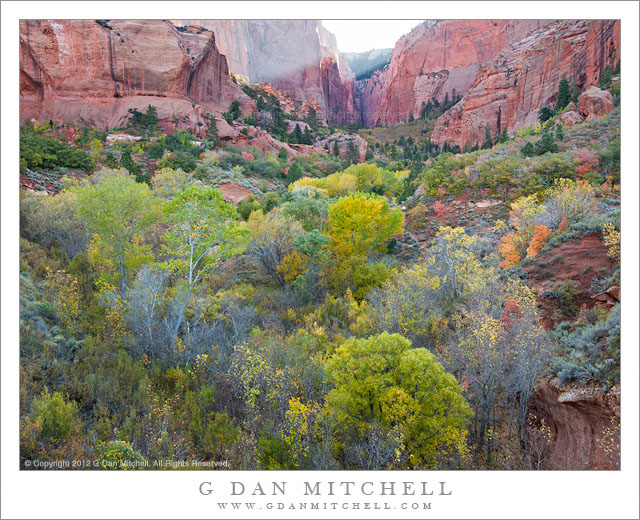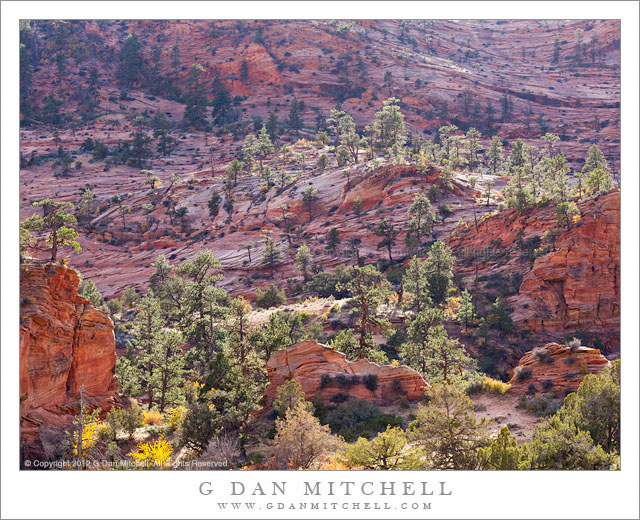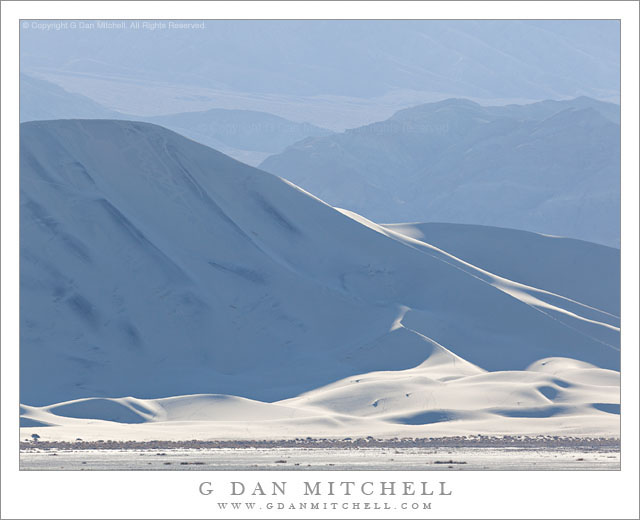Layered Sandstone and Red Leaves. Zion National Park, Utah. October 22, 2012. © Copyright 2013 G Dan Mitchell – all rights reserved.
The red autumn leaves of a small tree contrast with the angles and layers of a curving sandstone slot canyon, Zion National Park
One of the most intriguing things about slot canyons – among many intriguing things – is the surprising variety of things to be seen as you progress through them. While the basic idea might seem somewhat consistent – e.g. narrow canyon with tall walls and water in the bottom – the details of the canyons seem amazing diverse and they change from moment to moment and bend to bend. This first really made sense to me in a canyon in the Escalante area where we entered by walking down a very wide and flat wash. Gradually a low sandstone “curb” began to appear along the sides of the wash and almost before I knew it this had grown to become a wall. Shortly the bottom of the canyon narrowed so much that we had to rise out of it and walk along side until we got to a point where we could again drop down into it, and it was now deep enough to cut off much of the direct light from overhead.
The slot in this photograph is in Zion National Park, and to be honest I not entirely certain where it was outside of a sort of general area. As we walked through it – and it was not a long canyon – it twisted along the base of a cliff wall and at this spot there was almost no visible vegetation except for the red leaves of one small autumn tree poking out from behind the thickly striated and twisted rock of the canyon side walls.
 G Dan Mitchell is a California photographer and visual opportunist whose subjects include the Pacific coast, redwood forests, central California oak/grasslands, the Sierra Nevada, California deserts, urban landscapes, night photography, and more.
G Dan Mitchell is a California photographer and visual opportunist whose subjects include the Pacific coast, redwood forests, central California oak/grasslands, the Sierra Nevada, California deserts, urban landscapes, night photography, and more.
Blog | About | Flickr | Twitter | Facebook | Google+ | 500px.com | LinkedIn | Email
Text, photographs, and other media are © Copyright G Dan Mitchell (or others when indicated) and are not in the public domain and may not be used on websites, blogs, or in other media without advance permission from G Dan Mitchell.




